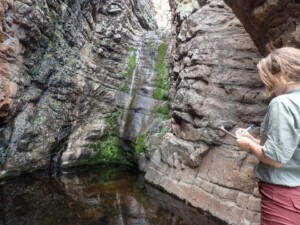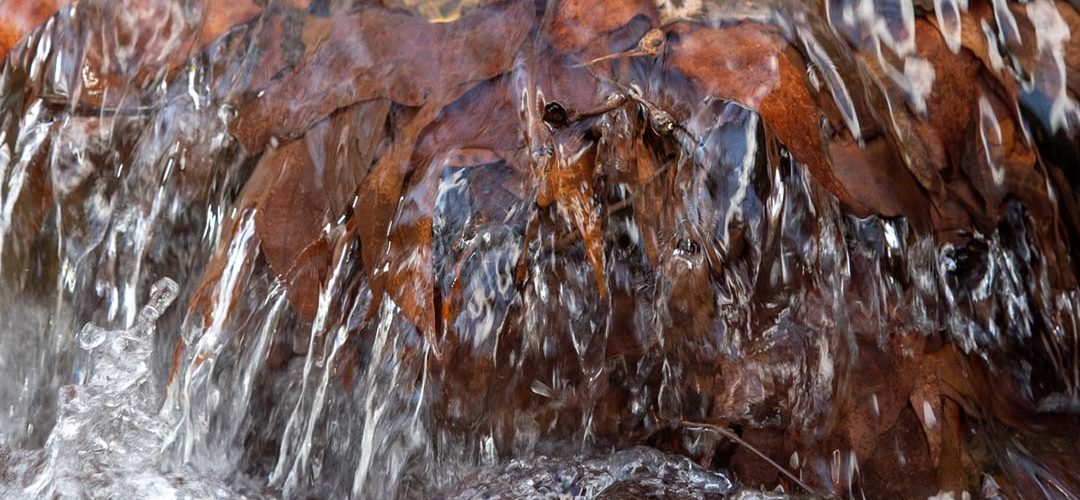
In the arid Sky Islands, water is a precious resource for all life. We envision a future where clean water flows and is available to people, plants, and wildlife throughout the region. Core to this vision is a network of flowing springs and streams across the Sky Islands that are reliably accessible to migrating wildlife and sustaining vibrant communities of native plants and animals.
We seek to better understand water in this region by documenting the condition of springs, shallow groundwater, and streams. We use this information to advocate for the protection of water sources across the landscape. We champion policy and lead projects that improve upland watershed health to enhance water recharge and habitat quality where water flows.
Springs
Springs are oases of life. They offer animals a place to drink and are home to a vast diversity of plants and animals, some of which are only found at springs. Although springs are abundant in this arid region, they are poorly documented and little studied. Lack of information on their location, how they are used, and their condition hinders their protection and stewardship. Springs suffer from extensive human modification and are among the most threatened ecosystems. Increasing human demand for water, combined with climate change impacts from less precipitation, warmer temperatures, and more intense fires, threaten springs and pose significant conservation challenges for spring and riparian habitats.
We protect, enhance, and sustain springs and spring habitats through science-driven conservation. There are nearly 4,000 known springs in the Sky Island region of southern Arizona and likely the same number or more in Sonora. We’re working with volunteers and partners to continually measure the health of springs and mobilize community conservation action to protect springs and their watersheds for future generations. Our approach is to:
- Work with volunteer community scientists and partners to map and document the health of springs to understand where water sources are most vulnerable to disturbance and depletion.
- Inventory the biodiversity of plants and animals that rely on spring habitats.
- Use landscape analyses to identify priorities for spring conservation across the binational Sky Island region.
- Design and lead spring stewardship projects in partnership with private landowners and public land managers that keep water flowing for the benefit of native plants and wildlife.
- Advocate for policies and land management approaches that protect water for natural areas and the springs that sustain biological diversity.
Our Impact
Since 2012, Sky Island Alliance staff and volunteers have surveyed more than 2,000 springs in the U.S. and Mexico, conducted long-term monitoring of 16 springs, installed more than 800 loose rock erosion control structures to improve watershed health, convened managers and experts to develop regional approaches to study and protect springs, trained cohorts of spring stewards on conservation science methods annually, and conducted dozens of stewardship projects to enhance spring habitat.
In 2020, we launched our Spring Seeker program. Since then, more than 100 people across the region helped us monitor and survey 1,300 springs in the U.S. and Mexico. Visitors to these springs completed a quick survey in an app on their phone, detailing the location and state of each water source—including which ones were impacted by ongoing drought, which ones need some restoration work or protection, and which ones are intermittent versus perennial. This data allows us to plan future projects. We also share it with our partners to help them better manage their resources.
Across the Sky Island region, our Water Program has taken many actions to protect and improve springs and other waters. Focal watersheds where we are working to protect watershed health are outlined in purple and surveyed springs are blue, monitored springs are red, stewarded springs and other waters are green.
Ready to Join Us?
Learn more today about our Spring Seeker program and how you can help with this important work.

